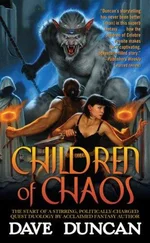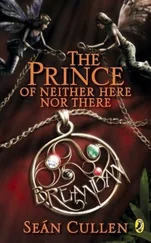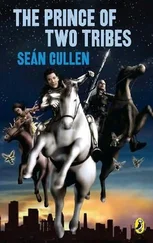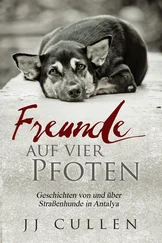____
In September 2003, the last known layer of the cover-up finally came out. It had unraveled over the course of a full year. It started when someone in the sheriff’s department found some paperwork in a three-ring binder unrelated to the Columbine case. It was a brief police report on Eric Harris. Eight pages from his Web site were attached. They included the “I HATE” rants, boasts about the missions, and descriptions of the first pipe bombs. Eric bragged about detonating one. The report was dated August 7, 1997, more than six months earlier than reports uncovered to date.
The report was brought to the new Jeffco sheriff, Ted Mink. He called a press conference. “This discovery and its implications are upsetting,” he said. “The obvious implication… is that the sheriff’s office had some knowledge of Eric Harris’s and Dylan Klebold’s activities in the years prior to the Columbine shootings.” He released the documents and asked Colorado Attorney General Ken Salazar to conduct an outside investigation.
Salazar assigned a team, which discovered that more crucial documents were missing. Much of Mike Guerra’s file related to his premassacre investigation had disappeared—both the physical and electronic copies. In February 2004, the attorney general issued a report stating that Jeffco was not negligent, but should have followed through with the warrant and searched Eric’s house more than a year before Columbine. It also said files were still missing.
His team continued investigating. Some people refused to cooperate. The interview report on former sheriff John Stone stated that he was visibly angry and considered the investigation politically motivated. “We were unable to ask Stone any questions or have any meaningful dialogue regarding our investigation due his apparent state of agitation,” it concluded.
The breakthrough came a month later, when investigators went back for a third interview with Guerra. This time, he was more forthcoming. He spilled the one secret Jeffco officials had been good at keeping: the existence of the Open Space meeting. Investigators quietly began confronting other officials who had attended. They got some colorful responses. Former undersheriff John Dunaway said he believed Guerra was upset that “he might be viewed as some kind of blithering idiot. That he, you know, was sitting on top of all of this.”
In August 2004, the Colorado attorney general called a grand jury to flush the file out and consider indictments. The panel swore in eleven witnesses. The file was never recovered, though investigators were able to reconstruct most of it.
The probe turned up other startling discoveries. According to the grand jury report, Division Chief John Kiekbusch’s assistant, Judy Searle, testified that in September 1999, he asked her to find the Guerra file. He told her to search the computer network and the physical files, and to do it in secret. He instructed her specifically not to tell the officers involved. Searle testified under oath that she found that suspicious. She normally would have started her search by talking to those officers. Searle searched, and discovered nothing. She gave Kiekbusch the news: there seemed to be no record anywhere, no sign the file ever existed. She watched his reaction. She testified that he appeared “somewhat relieved.”
According to that same report, in 2000, Kiekbusch instructed her to shred a large pile of Columbine reports. Searle testified that she did not find the request unusual at the time, because Kiekbusch was preparing to leave the office, and Searle assumed he was purging duplicates. She complied.
The grand jury released its report on September 16, 2004. It found that the Guerra file should have been stored in three separate locations, both physical and electronic. All three were destroyed, it concluded—lapparently during the summer of 1999. It described that as “troubling.”
It was also disturbed by attempts to suppress the information—specifically, the Open Space meeting, attended by Stone, Dunaway, Kiekbusch, Thomas, Guerra, and the county attorney, among others. “The topic of the Open Space meeting, the press conference omissions and the actions of Lt. Kiekbusch raise suspicions to the grand jury about the potential that the files were deliberately destroyed,” its report stated.
But every witness denied involvement in the destruction, the report said. Given that, the grand jury could not determine whether the suspicious activity “is tied to a particular person or the result of a particular crime.” Accordingly, it concluded that there was insufficient evidence to indict.
Kiekbusch filed a formal objection. He said the shredding was limited to drafts or copies. His assistant’s perception of his relief was a mystery to him.
He said the grand jury implied that he had attempted to cover up, hide, or destroy documents. He unequivocally denied all of it.
____
Brian Rohrbough got most of what he sought: nearly all the evidence came out, and the national response protocol changed. But he never felt like he’d won. He gave up on justice. No one would pay; nothing would change.
Most of the top officials left the Jeffco sheriff’s department. Stone survived the recall petition drive, but did not run for reelection. The one county official to come out of Columbine glowing was DA Dave Thomas. Many victims had perceived him as their champion. In 2004, he gave up his position to run for Congress. Polls indicated a toss-up, and the race gained national prominence and funding. The Open Space scandal broke less than two months before Election Day. Thomas’s poll numbers plunged. Money dried up. He lost big. In 2007, he ran for school board. He now helps oversee 150 Jefferson county schools, including Columbine High.
Brian Rohrbough hurled himself into a different passion. He picketed abortion clinics and rose to president of Colorado Right to Life. There, he butted heads with the conservative parent organization, which he considered far too liberal. The last straw came when Rohrbough signed an open letter berating Christian conservative leader James Dobson as soft on abortion. It was published as a full-page newspaper ad. National Right to Life expelled his chapter. Dobson’s organization, Focus on the Family, issued a news release calling it “a rogue and divisive group.”
Later, Brian ran for office. He joined an obscure third party that got itself on the ballot in three states. It nominated Brian for vice president of the United States.
Brian wasn’t always mad. He remarried and adopted two children, who gave him great comfort. At work, he could be surprisingly tranquil. He continued to run his custom audio business, doing most of the labor himself. He loved the precision work: tweaking the acoustic gauges, setting time delays for the front speakers just a fraction of an instant long, so the chords struck the driver’s eardrum at precisely the same moment as the sound waves rolling in from the rear. Exquisite harmony. Brian could get lost for hours in his workshop. When a customer stopped by for a consultation, he was as gentle as Mr. Rogers buttoning up his cardigan.
Then he would think about Danny. Or a stray thought would lead him back to Columbine. The scowl returned.
____
Brad and Misty Bernall got out of Colorado. They moved to a hamlet called Blowing Rock, just off the Blue Ridge Parkway in the heart of the North Carolina mountains. They hated it out there. More isolation than they’d bargained for. Their marriage was shaky sometimes, but they held on. Nearly all the parents of the Thirteen stayed together.
Brad had struggled mightily in the early days, but as time wore on friends said he came to terms with Cassie’s death. Misty smoldered. Nearly a decade later, friends described her as getting angry and frustrated at the mention of the martyr controversy. Misty felt she had been robbed, twice. Eric and Dylan took her daughter; journalists and detectives snatched away the miracle.
Читать дальше







